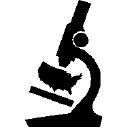Cryo-electron Microscope with 1,000,000-times Magnification Offers New Challenges

If you think your new digital camera is special with it’s 10-times zoom lens think how the people at The University of Queensland feel with their cryo-electron microscope that can get 1,000,000-times magnification.
The microscope is the centrepiece of UQ’s new Advanced Cryo-Electron Microscopy Facility, launched today, making the laboratory equal to any in the world.
The Facility, part of UQ’s Centre for Microscopy and Microanalysis (CMM), forms the Queensland node of Nanostructural Analysis Network Organisation (NANO), a $11.2 million federally funded project linking microscopy centres around the country.
NANO’s aim is to provide advanced capabilities for the characterisation and manipulation of matter at the atomic and molecular level.
Professor John Drennan, Director of the CMM and Chair of the NANO Scientific Panel, said the Facility, to be housed at UQ’s Institute for Molecular Bioscience, would aid research in many different fields.
“With this Facility we join an exclusive group of centres around the world with these capabilities,” Professor Drennan said.
“Projects presently being undertaken include obtaining a three dimensional picture of pancreatic cells involved in insulin production; the structure of molecules associated with photosynthesis and the possible production of hydrogen; and the internal structure of porous materials associated with catalysts.”
He said the cryo-electron microscope, which was partially funded by the State Government who put forward $1.5 million, would allow scientists to investigate structures to atomic resolution of a range of active biological entities
“To understand the interactions which control our health, the transmission of diseases, and even define our thought processes, we need to know the structure of the molecules – in other words where each atom group is,” Professor Drennan said.
“To do this we need to isolate the molecule and image it at magnifications (200,000-times) that allow us to see the atomic arrangements.
“This is not a simple matter as the molecules that sustain life are sensitive, easily destroyed and are usually only stable in a water rich environment.
“Here the cryo-electron microscope comes into its own.
“With the capability of obtaining magnifications from 10,000 to a million-times, the instruments can easily resolve all the features we need to examine.”
He also said the revolutionary technology of cryogenically cooling the sample, as developed by UQ researcher Associate Professor Alasdair McDowall and colleagues, would allow researchers to examine the material in its native state and with the minimum of damage.
The Facility was officially opened by Mrs Linda Lavarch, Parliamentary Secretary to the Minister for State Development and Innovation.
Source: University of Queensland
















